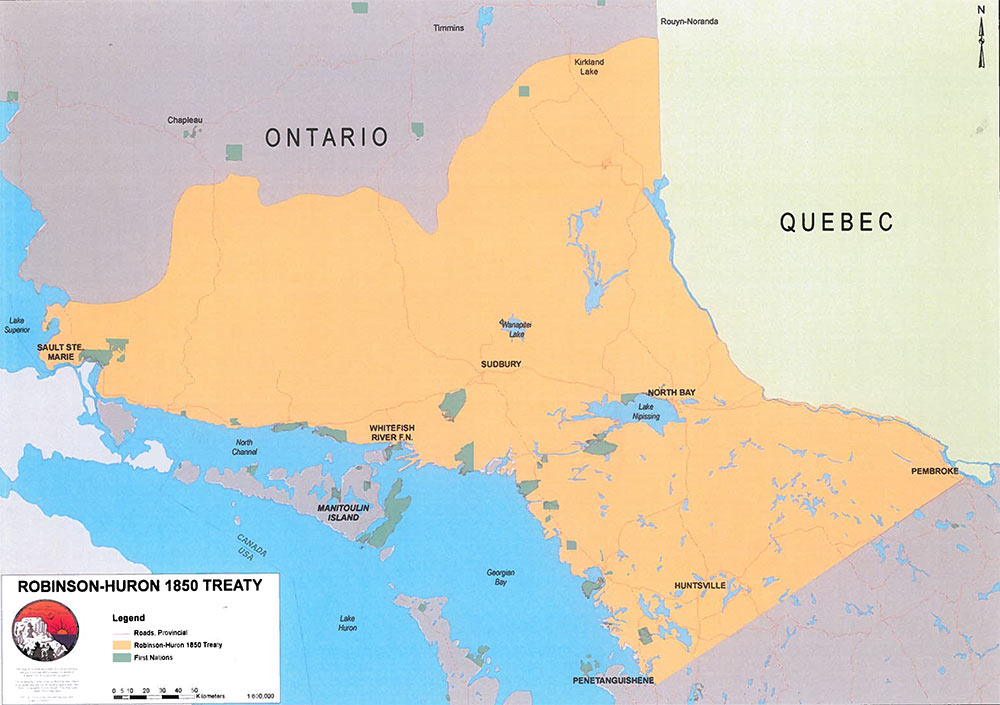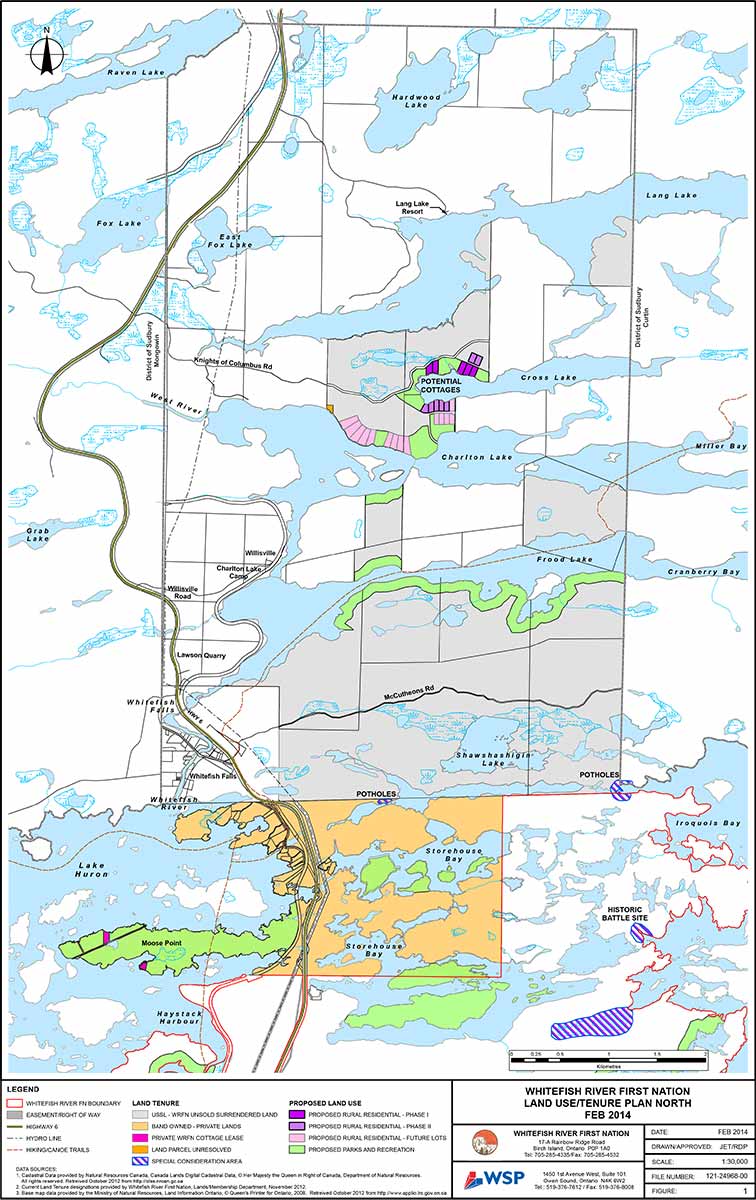Treaties and Maps - Whitefish River First Nation (original) (raw)
- About Us
- Governance
- Economy
- Cannabis
- Programs & Services
- Membership Portal
- Employment Opportunities
- Newsletters
- Contact Us
Treaties and Maps
Treaties and Mapsdeplume2017-03-08T18:37:15-05:00
Nature of Treaties
Treaties in Canada are constitutionally recognized agreements between the Crown and Aboriginal people. Most of these agreements describe exchanges where Aboriginal groups agree to share some of their interests in their ancestral lands in return for various payments and promises.
Before the colonization of Canada, Aboriginal people governed the land. Aboriginal people had all the rights of ownership, including the right to use the land and water resources as they desired. Following colonization, new European settlements were established. These settlements needed land and its resources. Sometimes lands were obtained through warfare and sometimes by negotiation or purchase. Treaties were the legal documents used to settle wars or to record the details of negotiation or purchase.
Starting in 1701, in what was to eventually become Canada, the British Crown entered into solemn treaties to encourage peaceful relations between First Nations and non-Aboriginal people. Over the next several centuries, treaties were signed to define, among other things, the respective rights of Aboriginal people and governments to use and enjoy lands that Aboriginal people traditionally occupied.
Treaties include historic treaties made between 1701 and 1923 and modern-day treaties known as comprehensive land claim settlements.
Treaty rights already in existence in 1982 (the year the Constitution Act was passed), and those that came afterwards, are recognized and affirmed by Canada’s Constitution.
Whitefish River First Nation signed two treaties: The Bond Head Treaty of 1836 and the Robinson Huron Treaty of 1850. Both treaties are pre-confederation treaties. They were concluded with the British Crown not Canada.
The Bond Head Treaties 1836
In 1836, Lieutenant-Governor Sir Francis Bond Head wanted to move farming Aboriginal peoples to Manitoulin Island, where they could hunt and fish in isolation from the corrosive forces of “civilization” — and also fulfil the lieutenant-governor’s stereotype of noble savagery.
Manitoulin was designated permanent Aboriginal territory in a treaty at the gift-distribution ceremonies at Manitowaning in 1836. Chief Shawanosowe of Whitefish River signed the 1836 Treaty.
Bond Head never succeeded in persuading Aboriginal peoples in the more arable southern lands to move to Manitoulin. In fact, in negotiating with the Saugeen people, he found they mostly wanted a commitment that the Crown would protect their ancestral land from squatters.
Robinson Huron Treaty 1850
William Benjamin Robinson secured agreement from Aboriginal leaders to “cede, grant, and convey unto Her Majesty” about 50,000 square miles (129,500 sq.km) north of the upper Great Lakes. These transactions, known as the Robinson-Huron and Robinson-Superior treaties, provided for the creation of 21 new reserves, each to be held by the Crown for the “use and benefit” of the groups whose leaders’ names and marks were on the agreements.
In the Robinson Treaties, the Crown promised that Aboriginal peoples could hunt and fish throughout the ceded territory “as they have heretofore been in the habit of doing.” This promise, the first of its kind in an Aboriginal treaty, was made, Robinson explained, so that Aboriginal peoples could not make future claims in return for loss of “their usual means of support.”
These words go far to capture the nature of the tradeoffs in this and many subsequent treaties. Our people agree to open the largest part of their ancestral lands for non-Indian settlement in return for security of land tenure in a smaller area or areas.
Chief Waubekeke is the 4th signatory to the Treaty of 1850 taken in Sault Ste. Marie on Sept 9th, 1850. Chief Waubekeke is the son of Chief Shawanosowe.
We derive $4.00 per person annually as a result of this treaty. This payment is also known as a Treaty Payment or Annuity.





